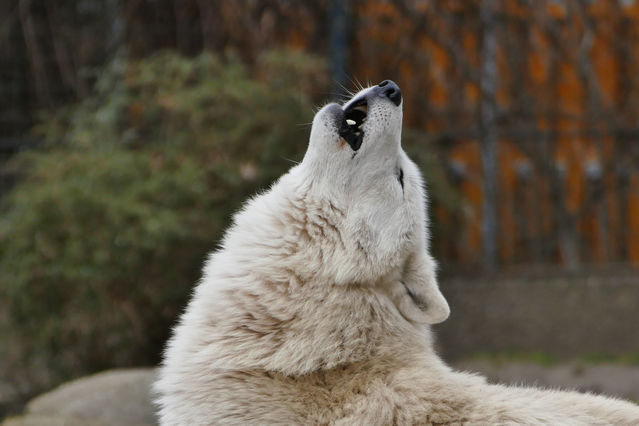Animal Behavior
What Does a Wolf Howl Say?
Howls are individually distinct and could provide clues about a situation.
Posted November 1, 2018
This time of year, the sound of a wolf howl piercing the night can really send shivers up your spine. But that call of the wild isn’t meant to scare you; it’s actually a message to other wolves.
Wolves howl as an expression of territoriality to other, nearby packs—a warning to keep their distance. They also howl to maintain contact with members of their own pack.
Stuart Watson of the University of Zurich wanted to know more about the types of information contained in wolf howls. In a new paper in the journal Animal Behaviour, he and his colleagues examined what wolf howls express about the caller and the situation motivating the call.

Watson, with Simon Townsend and Friederike Range, recorded howls from captive timber wolves at the Wolf Science Center in Ernstbrunn, Austria. They analyzed over 900 howls from nine individuals across three packs. In addition to investigating whether howls were individually distinct, the researchers also looked at the context in which the howls were produced—whether the call was produced spontaneously just after sunrise, for example, or was elicited by the temporary absence of a group member taken for a walk by care staff.
The researchers reconfirmed previous evidence that individual wolves produce acoustically distinct howls, which might help identification between distant pack members.
“The differences between individuals were often quite audible—some of the wolves have very distinctive howls,” says Watson.
Individual differences in howls were primarily associated with differences in frequency, which are likely attributable to anatomical differences in body size and vocal tract length.
Watson, Townsend, and Range also made a new discovery: Howls varied according to the context in which they were produced. Spontaneous howls differed from elicited howls in a number of measures based on frequency, energy, and amplitude.
This could suggest that wolves are able to actively modify their calls in order to serve different functions, although they may also simply vary because of the different emotional states associated with each context.

“It’s currently unknown whether the context-based differences we identified are a result of differing arousal states experienced by the howler (much like how our tone of voice changes when we are excited) or if calls produced in each context fit a particular ‘template’ that facilitates understanding by the receiver,” says Watson.
The findings help shed light on how wolf howls can serve multiple functions. It could be that subtle acoustic differences between types of howls help wolves differentiate between those meant to recruit individuals back to the pack and those signaling territory to other packs.
Watson says that playback tests are needed to determine whether the acoustic differences between spontaneous and elicited howls are meaningful to the wolves themselves.
Though they may sound spooky to our ears, from the wolves’ point of view, howls are full of valuable information.
“This work supports an increasing body of evidence suggesting that social carnivores, such as wolves, have intriguingly complex communication systems that have a lot to tell us about the evolution of communication,” says Watson.
References
Watson, S. K., Townsend, S. W., and Range, F. (2018). Wolf howls encode both sender- and context-specific information. Animal Behaviour 145: 59-66. doi: 10.1016/j.anbehav.2018.09.005.


